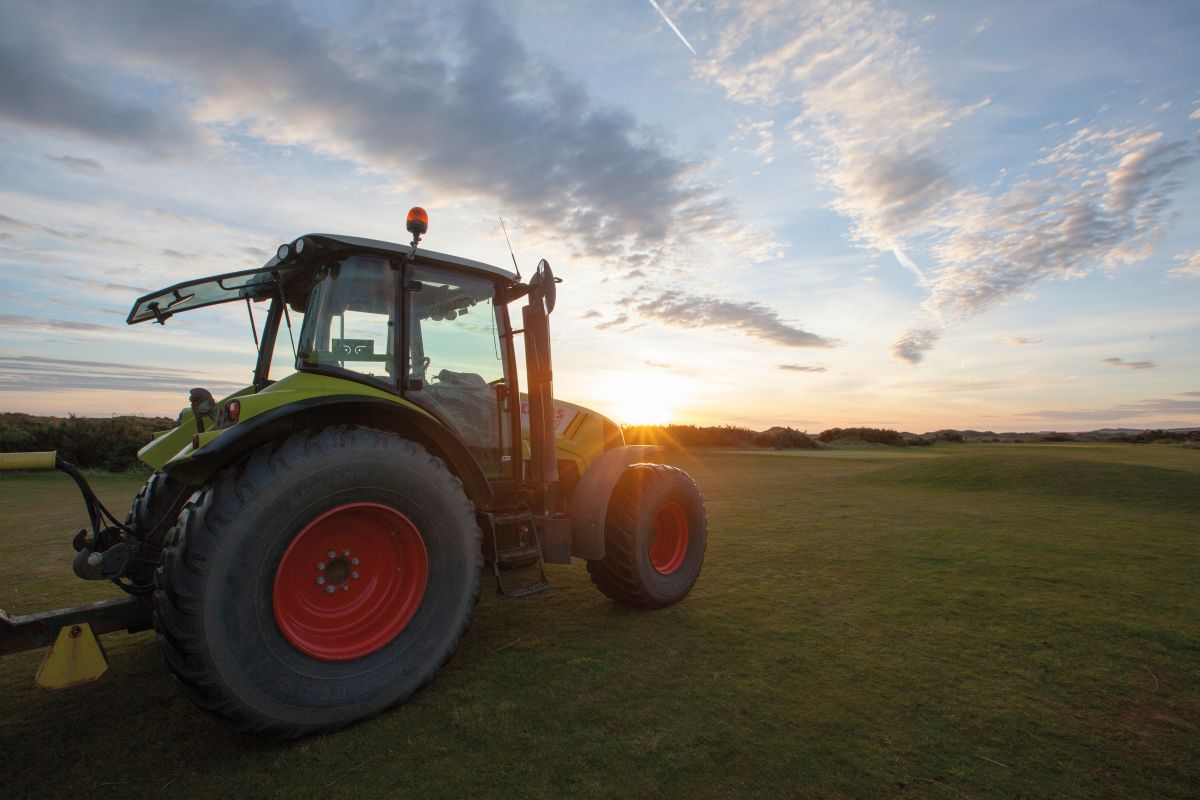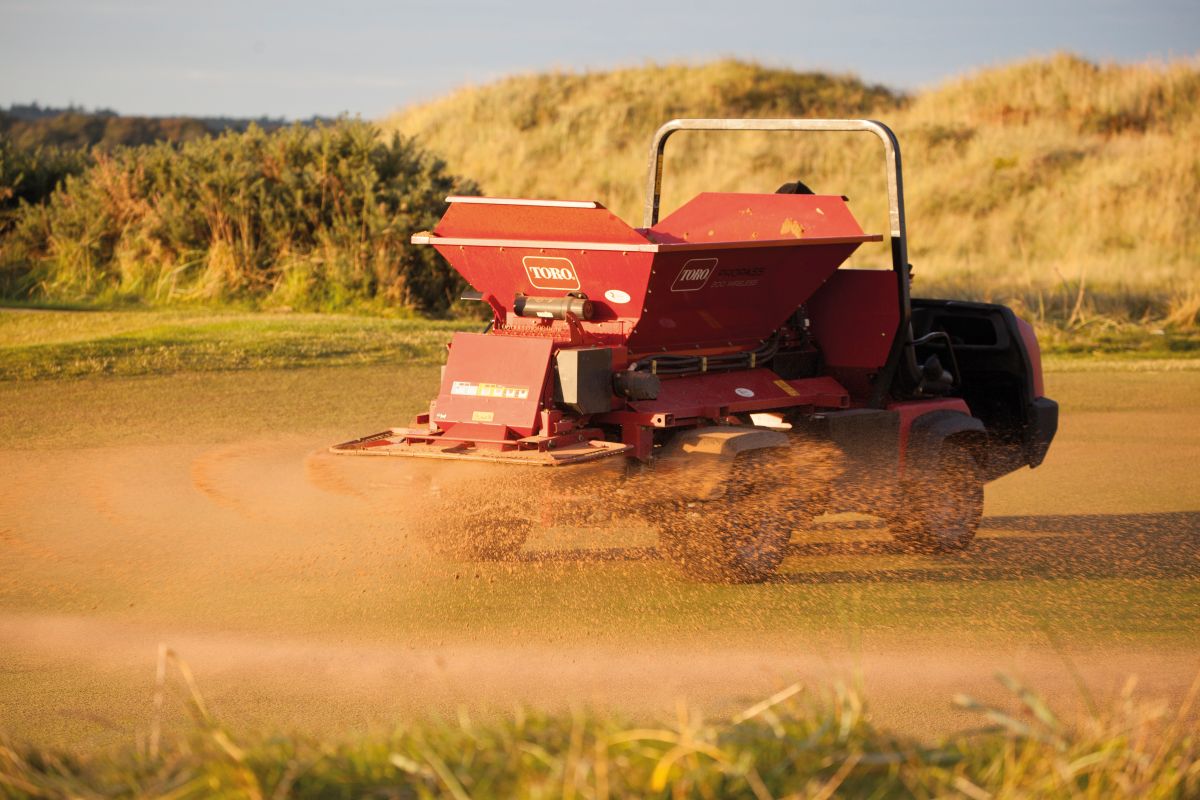- Homepage
- News and Features
- Greenkeepers' Question Time: disease, winter mats, slow play
Greenkeepers' Question Time: disease, winter mats, slow play
It’s your chance to ask the experts to get the greenkeeping information that you really want. You asked Scott Reeves, veteran course manager and BIGGA head of membership, why mats are so important, how to tackle slow play – and much more.
Your questions answered

Scott Reeves
Head of Membership
Scott was formerly the course manager at Leyland Golf Club, where he spent 17 years. From 2019 to 2022 he was BIGGA Chairperson and he has volunteered at every level of the association. Scott became BIGGA's Head of Membership in June 2024.
If you were too late in spraying to avoid the spread of fusarium in the Autumn – and the greens are showing serious damage – what is the best solution now?
I would probably overseed, but it’s only really going to work when soil temperatures are high enough. You’d want to keep the height of cut sensible – don’t go too low – and then it’s about using best cultural practices like aeration and top dressing. But if you’ve got damaged turf and have lost grass cover heading into the spring then don’t cut too short too soon.
Greenkeepers have lost a lot of tools for dealing with microdochium patch over the last few years – the biggest being the removal of lots of contact fungicides. Previously, as soon as we saw the spores present themselves, we had the option to spray straight away. We don’t have that anymore. Now, you can only spray preventatively, as part of a programme, or not spray at all. That’s really affected the ability of greenkeepers to respond. The chemical that was taken away – iprodione – was removed because it was potentially carcinogenic, so there was a good reason, but the question also implies that the only way to manage disease is through spraying chemicals and that’s just not true.
There are lots of other things you can do to reduce the likelihood you will be affected by disease and there are lots of golf courses that don’t use chemicals at all. It’s site specific and depends on an awful lot of factors: tree cover, air movement, the main proportion of grass species in your sward. If you’ve got poa annua, you’re more likely to get disease. Courses have had great success using sulphate of iron to control disease, or a dew suppression programme. A chemical approach is not the only option.
Does using mats in winter really make much difference come spring and summer?
Absolutely. If we’re talking about using personal mats through the green, I think they make a huge difference. In fact, most golf clubs I worked for preferred them in the end because, on a heavy clay soil, you can’t cut the rough because it’s too wet. If you’re able to use a mat it means you’re guaranteed a pretty decent lie wherever your ball lands and they do improve the appearance of the course coming out into spring.
It all comes down to the membership of the individual club. If they’re willing in early spring to put up with lots of divots that aren’t recovering (because of the lack of grass growth and low winter temperatures) and you’ve got good budgets and can spend a lot of time divoting and seeding then that’s fine. Don’t use mats. But if you’ve got restricted budgets, then it’s important and it also shows golfers are playing their part in protecting their own course.

Slow play can be an issue at some courses. To speed it up, should clubs consider widening fairways or having less rough at driving distances for higher handicaps?
They should consider it. Why not? But I think slow play comes down to lots of factors, such as golfer behaviour, more than the width of fairways. I think not spending lots of time looking for your ball, or looking through your rangefinder, or being obsessed with going through a pre-shot routine, would probably speed the game up. Course set up has a part to play, but golfer behaviour plays at least as big a part.
Can you put too much sand on your greens?
The answer is yes, but your course manager will have done their homework and will know the amount of sand that can be absorbed by the growth rate they’ve got going on at that time. We’re getting much better at this. Many greenkeepers are looking at their growth patterns in scientific ways and working out their sanding regimes because of that information.
For a lot of golfers, any sand is too much sand because they don’t like disruption. I understand that, because they’ve paid their money, but it doesn’t happen that often and, as these resources become more and more scarce, you’ll probably see less of it anyway.

Many clubs carry out course maintenance shortly before the competition season gets under way. Could this be done at another time? Why is it important?
The course has come out of winter and you’ve probably kept it open more often than you would have liked and you’ve allowed play on the greens more often than you would have liked. The course is under pressure all the time and it takes its toll. Greenkeepers have to do something to alleviate the results of that stress and they have to carry out maintenance like aeration and top dressing. It’s absolutely no question.
The ideal time to do that is when the grass is really starting to get going, when the air temperatures are warming up, because that’s when you’re going to get growth which allows recovery to come faster. If you do it in January or February, when there is no warmth and no growth, the results of that aeration are going to be hanging around a lot longer. As you get into March and April, the temperatures are starting to pick up. If the work you have done has affected the surface, that will repair much faster.
What to read next
How automation is transforming greenkeeping – without replacing greenkeepers
Tags
Author

BIGGA
Get your question answered
It’s your course – want to send a question in about it? Email [email protected] and we’ll put it to one of our experts in our next issue.





